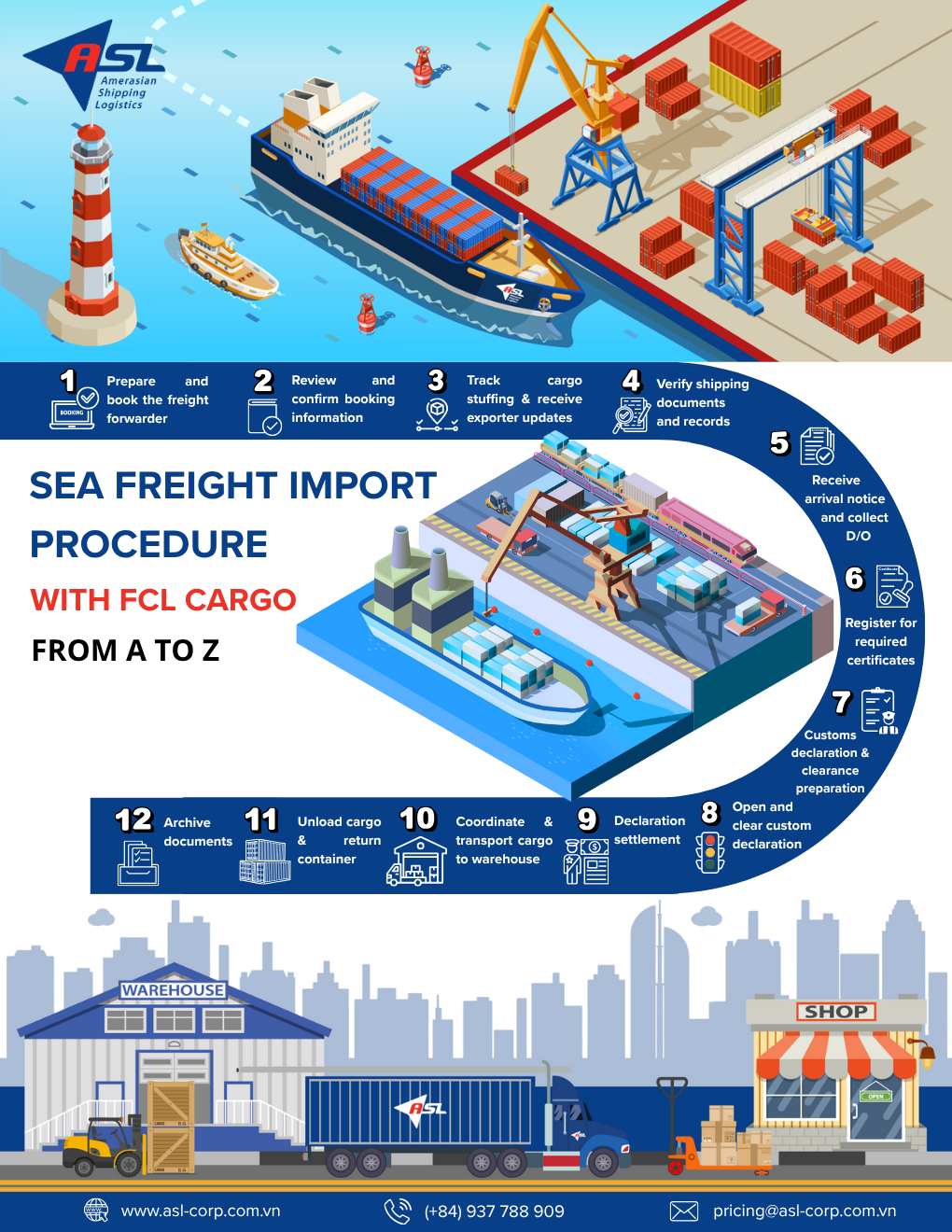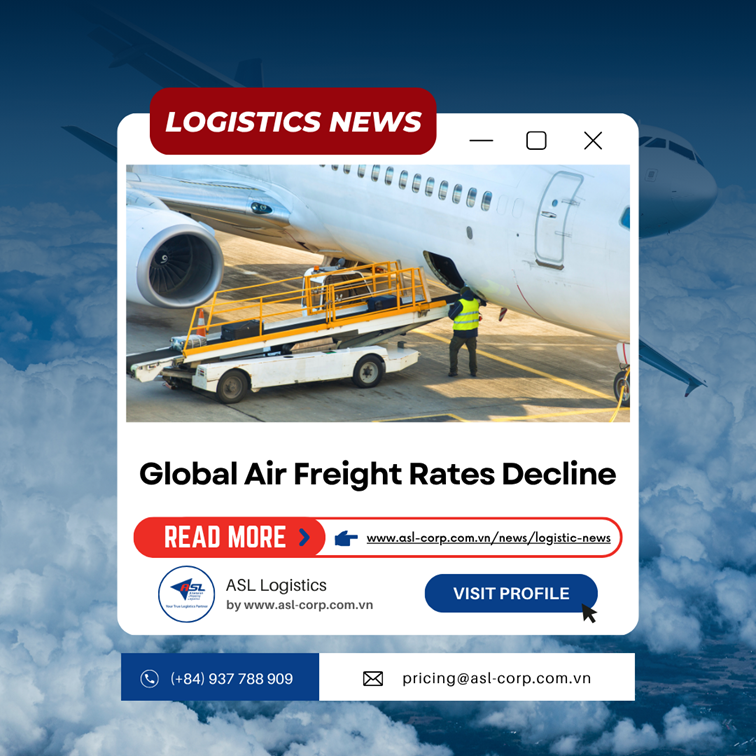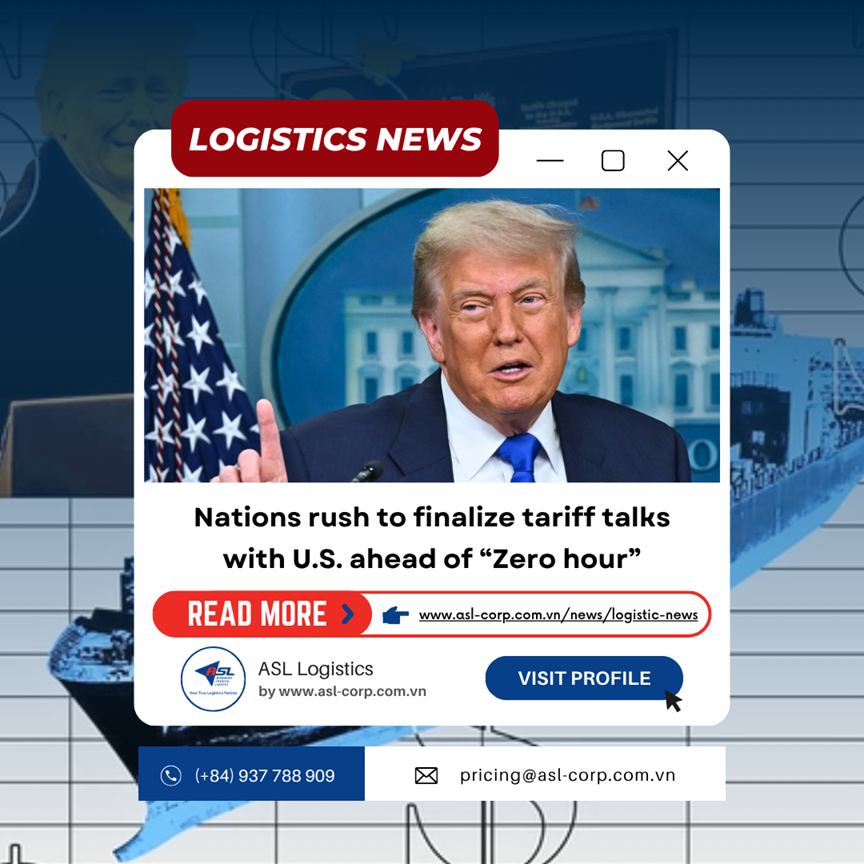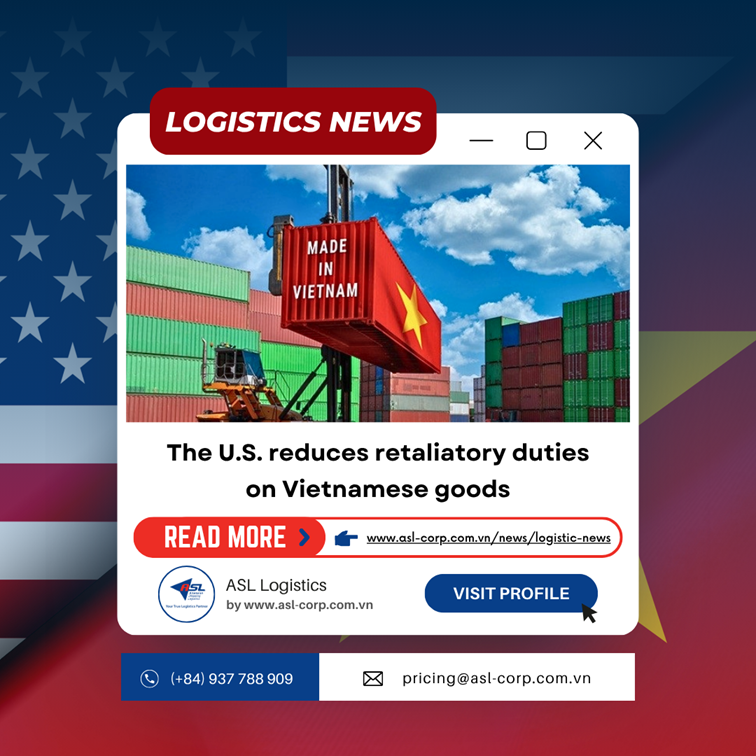Logistic News
SEA FREIGHT IMPORT PROCEDURE WITH FCL CARGO: FROM A TO Z
06 June 2025
Importing goods by sea, especially using the FCL (Full Container Load) method, is a popular transportation choice thanks to its advantages in cost, transit time, and cargo safety. However, handling large shipments is not simple — it requires businesses to prepare thoroughly and comply with regulations to ensure a smooth customs clearance process. In the article below, let’s join ASL Logistics in exploring the detailed steps of the FCL import process.

1. What is FCL?
FCL (Full Container Load) is a shipping method where the entire container is rented for transporting goods. The customer uses the full container space without sharing it with other shipments, which ensures safety, minimizes loss, and optimizes delivery time.
2. Sea Freight Import Procedure with FCL Cargo from A to Z
Step 1: Prepare and book the freight forwarder
After signing the contract with the exporter, the importer needs to select a freight forwarder (FWD) to arrange a booking with the shipping line. This step should be done early, especially during peak seasons, to avoid space shortages or lack of containers.
ASL Logistics supports booking arrangements and coordinates with transport partners to ensure a suitable shipping schedule. The following information is typically required when booking:
-
Port of Loading and Port of Discharge
-
Transshipment Port (if any): Depending on the shipping route
-
Cargo name and weight: As per the shipping documents
-
Estimated Time of Departure (ETD) and cargo stuffing schedule
-
Special requirements: Type of container, temperature control, ventilation, etc.
Step 2: Review and confirm booking information
Once the booking is received from the freight forwarder, the importer should carefully verify several key details related to the import shipment:
-
Port of Loading and Port of Discharge: These must match the agreed terms, as they directly affect the shipping schedule and customs declaration process.
-
Technical Requirements: For goods that require temperature control or ventilation, ensure these specifications are clearly and accurately stated.
-
Type of Container: Choose the appropriate type (e.g., reefer or dry container) and correct size (20’ or 40’) based on the nature of the cargo.
Note: Some details, such as the Shipping Instruction (SI) submission deadline, CY cut-off time, and empty container pickup location, will typically be arranged by the exporter.
Step 3: Track cargo stuffing and teceive updates from exporter
For imported shipments, it is essential to closely follow the cargo stuffing process through the exporter or freight forwarder. They will provide updates on container status, vessel schedules, and any arising issues.
Key points to note:
-
Empty Container: Request photos of the container’s condition before loading to avoid disputes upon container return.
-
Reefer Cargo: Take photos of temperature settings or install a temperature-tracking chip to ensure cold chain integrity throughout transit.
-
Vessel Delay: Ask partners for prompt updates in case of delays to handle related documentation in a timely manner.
Step 4: Verify shippinh documents and records
Before importation, determine if the goods require specific documentation as per import regulations, and request the exporter to provide all necessary papers accordingly.
During the process, request draft versions of all documents—especially the Bill of Lading (B/L)—to verify that all details are accurate. Even minor errors can result in customs clearance delays or cargo holds. Once everything is confirmed, ask the partner to send scanned or original copies.
Step 5: Receive Arrival Notice and collect Delivery Order (D/O)
At least one day before vessel arrival, you will receive an Arrival Notice from the carrier or its agent, detailing the vessel schedule and shipment information (vessel name, container number, seal number, cargo description, etc.). This notice also includes any applicable local charges.
Documents required to obtain the Delivery Order (D/O):
-
Company authorization letter
-
Original Bill of Lading (B/L)
-
Power of attorney (if applicable)
For shipments paid via Letter of Credit (L/C), the original B/L must be endorsed by the bank. The carrier will issue four copies of the Delivery Order, which are used for customs clearance, extension requests, manifest checking, and container release procedures.
EIR Form and Container Borrowing Procedures
For FCL (Full Container Load) shipments, customers must complete the following procedures to borrow containers:
-
Fill out the container borrowing form by signing a commitment with the shipping line.
-
Pay a container deposit as per the policy of each shipping line.
-
After unloading and returning the container to the depot, the deposit will be refunded if the container is undamaged.
-
In case the container is dented, dirty, or damaged, charges may apply, or the repair cost may be deducted from the deposit.
-
The Delivery Order (D/O) will indicate “DIRECT DELIVERY” if the customer receives the entire container without unloading at the port.
Notes: When Collecting the Delivery Order
-
Always check the expiry date on the D/O. If you cannot complete customs procedures in time, contact the shipping line to request an extension to avoid delays.
-
The cargo receiver must sign one copy of the D/O. This signed copy is retained by the shipping line as proof of delivery.
-
Compare the details on the D/O with those on the Bill of Lading (B/L). If any discrepancies are found, request the shipping line to amend and stamp “CORRECT.”
-
For FCL shipments unstuffed at the port, the D/O will be stamped “CARGO STRIPPED” along with an expiry date for cargo pickup.
Step 6: Register for required certificates
Depending on the type of goods and government regulations (based on the HS code), importers must register and obtain the necessary certificates to proceed with customs clearance. Examples include:
-
Chemicals: Must be declared and registered with the competent authority.
-
Fertilizers, food, or health-related products: Require quality control registration or food safety inspection.
-
May also require: quarantine certificates, food import inspection certificates, etc.
Without these documents, the shipment may be blocked at customs or face serious delays during inspection by authorities.
Step 7: Customs declaration and clearance preparation
Customs declaration is a critical step in the import process. Proper and complete documentation helps save time and costs while ensuring smooth clearance of your shipment.
As soon as you receive the Arrival Notice, prepare the following documents:
-
Sales Contract
-
Commercial Invoice
-
Packing List
-
Bill of Lading (B/L)
-
Certificate of Origin (C/O), Freight Invoice (if applicable)
-
Import License (if required)
-
Other documents depending on the specific type of goods
Today, customs declaration is performed electronically using software such as ECUS5 – VNACCS, which requires the importer to possess a digital signature token to log in and submit the declaration. The attached documents must be valid, and all data must be accurate and consistent with the regulations.
If the importer does not have a digital signature or encounters technical issues, an effective solution is to authorize a licensed customs broker. They can submit the declaration, sign, and stamp on the importer’s behalf.
See more: ASL Logistics's Customs Brokerage Services
The customs system will assign one of three clearance channels:
-
Green Lane: Immediate clearance
-
Yellow Lane: Document check at the Customs Sub-Department
-
Red Lane: Document check and physical inspection of goods
Once the lane is assigned, the payable taxes (shown on the declaration) must be settled. These may include:
-
Import duty
-
Value Added Tax (VAT)
-
Other applicable duties and charges
Step 8: Open and customs clearance
Customs clearance at the port depends on the customs channeling result, which includes:
-
Green Lane: Pay applicable import taxes (if any), print the barcode, and proceed to release the goods.
-
Yellow Lane: Pay taxes before or after initiating the customs declaration process, then proceed to clearance and goods release.
-
Red Lane: Similar to yellow lane, but includes mandatory physical inspection of the goods after initiating the declaration.
After submitting the complete set of documents to customs, if everything is in order, customs officers will process clearance in the system.
If the declaration is in yellow or red lane, and selected for inspection, the importer must open the container for customs officers to verify that the actual goods match the declared information.
Once the inspection is complete and the goods are verified as compliant, customs will approve clearance in the system.
Step 9: Declaration Settlement (Barcode Printing)
Once taxes have been paid and the declaration is cleared, the importer can print the barcode at the official site:
https://www.customs.gov.vn/SitePages/ContainerBarcodeReceiver.aspx
It is recommended to print at least two sets of the barcode and customs declaration:
-
One for customs supervision officers
-
One for the importer’s records
Customs will stamp the barcode copy—one set is returned to the importer, the other is kept for customs monitoring in case of any follow-up procedures.
Step 10: Coordinate and transport cargo to warehouse
After completing the clearance, bring the Delivery Order (D/O) to the port’s commercial office to print the EIR (Equipment Interchange Receipt) and receive all related documents.
The truck driver presents the documents to port gate customs for container release.
Before lifting the container, inspect its condition. If damaged, request the operations team to note this on the EIR.
Keep the container loan agreement carefully for the empty return process later.
Step 11: Unload cargo and return the container
Once the truck arrives at the warehouse, the importer should:
-
Check the container seal and physical condition (take photos before cutting the seal).
-
Remove dangerous goods labels (if any) before returning the empty container.
After unloading, the truck driver will return the empty container to the port or ICD as indicated in the container loan document. The depot will inspect and record any damage to the container upon return.
Note: Follow the shipping line’s free return period (usually 3 days) to avoid detention charges. If returning late, request an extension at the shipping line’s office and pay the applicable surcharge before returning the container.
Step 12: Archive all documentation
All customs documents must be properly archived for future reference or inspection by regulatory agencies (such as tax authorities, customs auditors, etc.).
Documents to Be Retained Include:
-
Customs documentation: Declaration forms, tax records (exemption/reduction/refund/handling), transport documents, and processing norms.
-
Accounting books and supporting invoices.
Understanding the complete FCL import process and anticipating potential risks is crucial for businesses to avoid unnecessary losses, save time and costs, and ensure seamless operations. Especially for large shipments involving complex paperwork, support from an experienced logistics provider is essential.
ASL Logistics: Your True Logistics Partner in Importing FCL Cargo by Sea Freight
ASL Logistics, with over 20 years of experience in logistics and import-export, offers comprehensive FCL export-import services: from HS code consulting, document verification, customs declaration to handling arising issues. ASL’s team of experienced specialists is committed to delivering accuracy, efficiency, and cost optimization, ensuring smooth procedures and minimizing risks throughout the import-export process.Contact ASL Logistics today to partner with us for your import-export operations — ensuring safety, compliance, and on-time delivery every step of the way.
Contact ASL Logistics to be your trusted partner in every step of the import-export process, ensuring safety, accuracy, and on-time delivery.
If you are looking for an agent assisting you the process of importing FCL cargo, contact ASL Logistics now for free consultation!
Contact ASL Logistics now for a free consultation on Sea Freight!
For consultation or a service quote, please feel free to contact us:
|
Office Locations |
Phone Numbers |
|
|
ASL Ho Chi Minh |
+84-28 3512 9759 |
pricing@asl-corp.com.vn |
|
ASL Hai Phong |
+84-225 3260 906 |
aslhp@asl-corp.com.vn |
|
ASL Dong Nai |
+84-251 883 6018 |
asldn@asl-corp.com.vn |
|
ASL Binh Duong |
+84-274 366 2707 |
aslbd@asl-corp.com.vn |
Related services: Sea Freight, Air Freight, Consolidation Service, Customs Broker Service, Domestics Trucking, 4PL Logistics Supply Chain Management, Project Cargoes Handling, Multi-modal Transportation, Warehousing Services, Shipping and Logistics Services to The U.S, ISO Tank Service, E-Commerce Services for B2B and B2C, Trucking Cross Border to Cambodia, Laos.

Head Office
ASL Hồ Chí Minh
Số 31/34A Ung Văn Khiêm, Phường Thạnh Mỹ Tây, TP. Hồ Chí Minh, Việt Nam
 Công Ty Cổ Phần Giao Nhận Vận Tải Mỹ Á
Công Ty Cổ Phần Giao Nhận Vận Tải Mỹ Á
 (+84)28 3512 9759
(+84)28 3512 9759
 (+84)28 3512 9758
(+84)28 3512 9758
 pricing@asl-corp.com.vn
pricing@asl-corp.com.vn
 mdirector@asl-corp.com.vn
mdirector@asl-corp.com.vn
 www.asl-corp.com.vn
www.asl-corp.com.vn
LOGISTICS SERVICES












.png)
.png)

.png)




